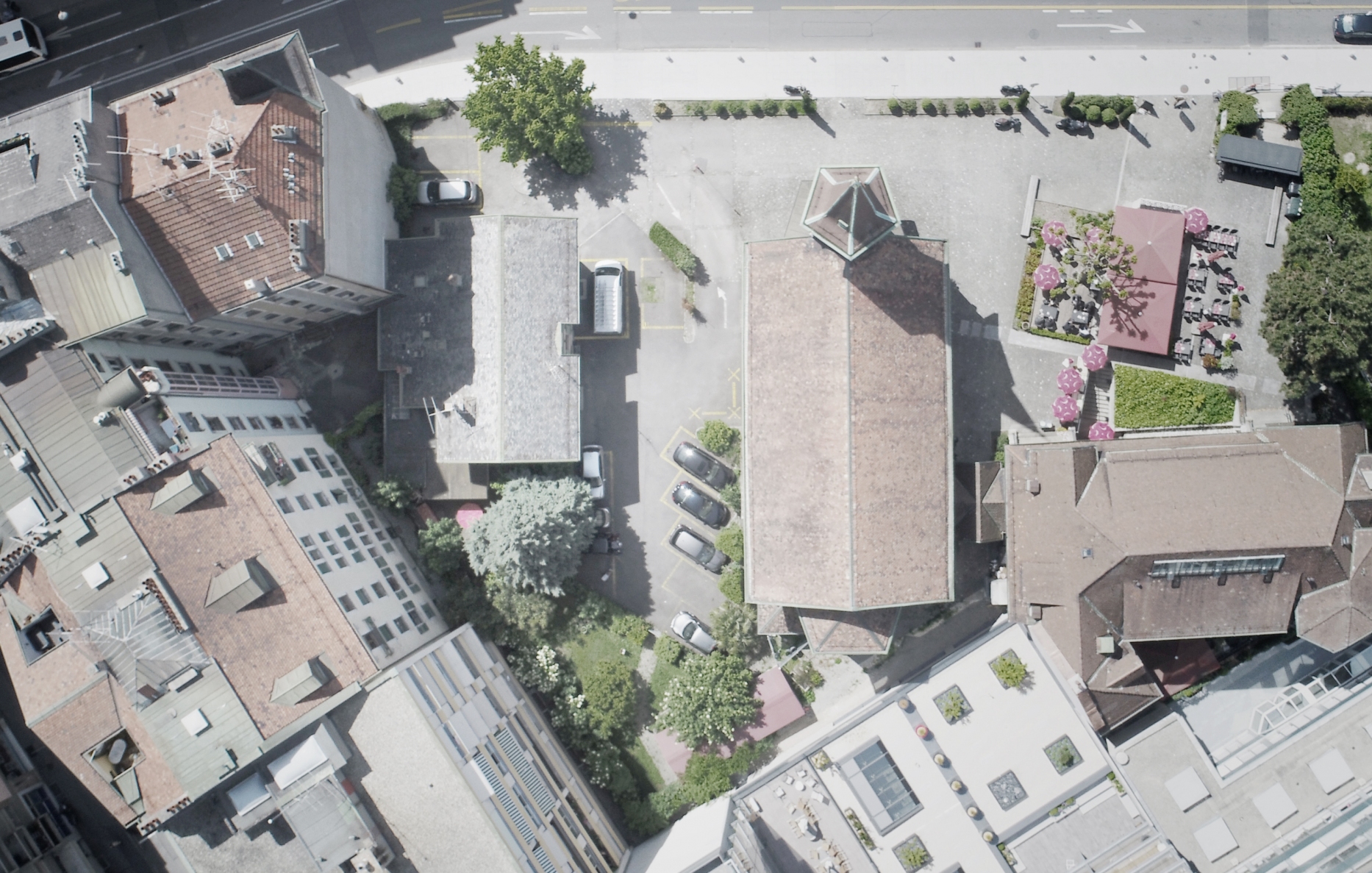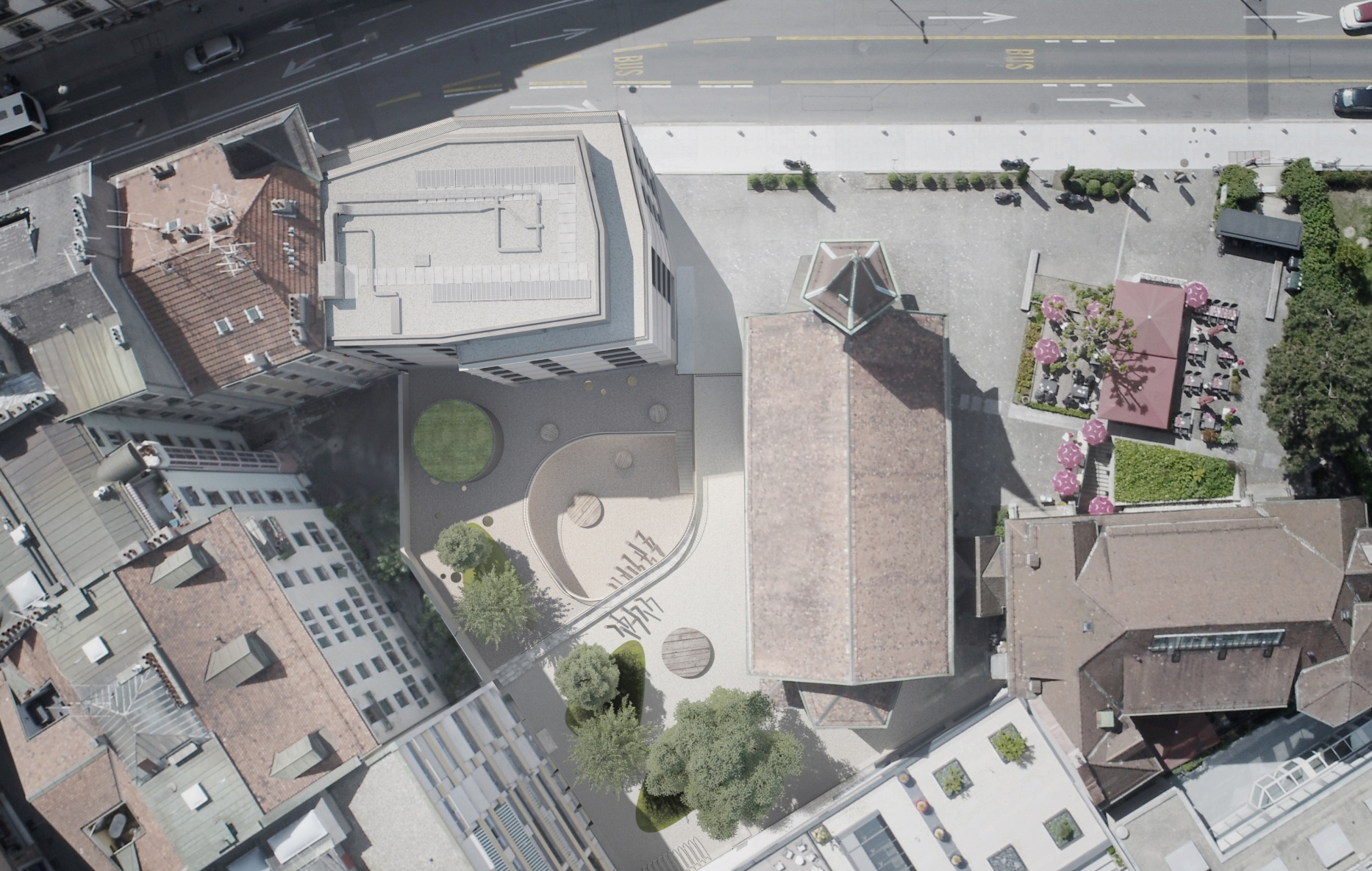RESIDENTIAL BUILDING
Essential axe
In a neighborhood that has been frozen for more than 100 years, a room is missing, a forgotten void of urban development in the 19th century. Projected in an environment of high heritage value, the new building comes as a missing piece to complete the urban puzzle.
On the edge of the district of Eaux-Vives are a group of high heritage value consisting of a temple, a parish hall, the town hall, apartment buildings and a courtyard occupied by a small house having lost his vocation as a nursery. All the buildings were built in stages between 1850 and 1910 and the void left today by the courtyard evokes the profound changes of the district of Eaux-Vives at the time when Geneva abandons its fortifications.
The surroundings of the city are then green areas with few buildings except for some villas. The temple of Eaux-Vives and an asylum of early childhood are built in this rural context around 1850. But the neighborhood will undergo a profound change in 50 years to become an urban district in the image of other developments in the so-called Fazyste belt (urban developments around the historic hub of Geneva from 1850 to 1940). As early as 1910, the built complex was made up of a homogeneous urban project with the exception of the early childhood asylum, which was joined by a six-story building with a wall waiting to create a difficult break in scale.

An urban sewing project
The proposed building, a mixed building, is a continuation of those that precede it along the route de Frontenex. He is discreet, follows the constructive codes of the time and tends to fade to better value the whole. It ends the block of housing buildings and creates a courtyard typical of nineteenth devices. Its position near the Eaux-Vives temple thus clarifies the urban functions between the temple square in front of the parish hall building dedicated to a public functioning and an urban courtyard protected from the traffic of the route de Frontenex road devolving on the inhabitants of the district.
On the ground floor, there is a nursery. Its role is fundamental because it allows to prolong the history of a place dedicated to the early childhood and to answer a fundamental need for the district of Eaux-Vives. This programmatic choice also allows reinjecting functionality, and therefore life, into the neighborhood.

A discreet but radiant architecture
Architecturally speaking, the nursery represents the base of reflection. A stabilizing base since it also extends from the basement to the first floor, windows overlooking the street to the inner courtyard. Large windows come to sequence the facade for a horizontal reading, a way of conforming to the surrounding typology.
On the floors, the apartments are three in number per level. The first is through and fits in the nineteenth-century tradition. The other two are radiant, each taking advantage of new perspectives and new points of view. A lot of space has been given today spaces that enjoy maximum sunshine due to their situations. To balconies or loggias too ostentatious and contradictory with the architectural choice, french windows have been installed to better play between inside and outside.
A contemporary reinterpretation of the existing
The summit penthouse slightly recedes from the facade and displays a darker shade, in connection with the surrounding roof. It is deliberately lower than the building it ends, so as to let live the pinnacle overlooking it. In frontage, the windows take again the dimensions of the neighboring buildings, just as the floors respect the proportions and the horizontal and vertical alignments of the existing one. In a few years, the patina of time will have almost erased the differences.
Displaying a mineral calm, a monastic sobriety, the building tends to disappear from the architectural composition. He puts the temple back in the center of the village, lets the spire hang over it, comes to fill a hollow tooth long considered the expression of a non-urban realization. By opting for a form of architectural restraint, we arrive at a better definition of space, while approaching closer to the neuralgic point.

A hollow tooth revitalized
The setting up of this mixed-use building at the edge of a busy road makes it possible to note some additional orientations. With a base that disappears at the approach of the temple and delimits it by a succession of slight breaks, it allows to better define the circulation of one side inviting the passerby to tilt his course rather than purely follow his sidewalk but also to create a real playground at the back. Life takes shape inside the building, and it spreads contagiously across the plot. A double intervention that allows here to fill an urban gap, to offer a vital counterpoint to the existing temple.